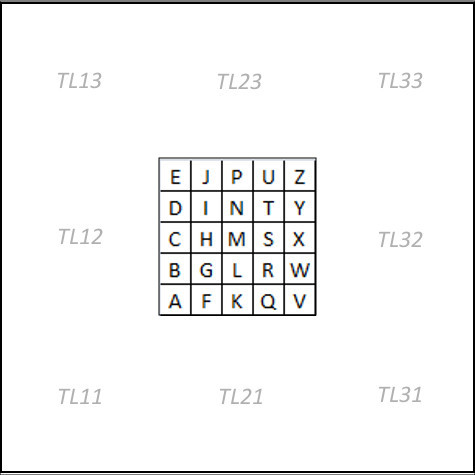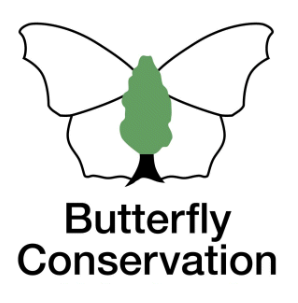Brown Argus
Brown Hairstreak
Chalkhill Blue
Clouded Yellow
Comma
Common Blue
Dark Green Fritillary
Dingy Skipper
Essex Skipper
Gatekeeper
Green Hairstreak
Green-veined White
Grizzled Skipper
Holly Blue
Large Skipper
Large White
Marbled White
Meadow Brown
Orange-tip
Painted Lady
Peacock
Purple Emperor
Purple Hairstreak
Red Admiral
Ringlet
Silver-washed Fritillary
Small Blue
Small Copper
Small Heath
Small Skipper
Small Tortoiseshell
Small White
Speckled Wood
Wall
White Admiral
White-letter Hairstreak
Extinct/rare immigrants
Species Accounts
Each species found in the Stevenage area since 1993, is described under the following headings:
General Distribution and Status: The current range and status of the species in the UK and how the species has fared in the past. Explanations are given for causes of gains or losses and most are well understood but some are open to conjecture. A brief summary of the state of the butterfly in Hertfordshire and Middlesex is also given. A table is provided for state of distribution and abundance at both national and branch (Hertfordshire and Middlesex) level. An '*' (asterisk) in any entry indicates that not enough data is available to perform the appropriate calculations.
Habitat Requirements: Where the species is likely to be found.
Larval Foodplants: Only the primary foodplants are given here.
Adult Food Sources: The flowers most likely to be visited for nectar for the butterfly. Other food sources like aphid honeydew will also be mentioned.
Historical Records: Records for the Stevenage area prior to Brian Sawford's survey in 1984-86. Any significant records elsewhere in Hertfordshire may also be mentioned.
Local Distribution and Abundance: The state of the butterfly in the Stevenage area (TL22 decad) illustrated by a distribution map. References will be made to tetrads within the TL22 decad. Each tetrad is denoted by a letter, starting with 'A' at the south-western corner, for TL2020 and ending with 'Z' at the north-eastern corner, for TL2828. Presence of a species is indicated by a small dark green circle for 2020 until 2022, blue square (the darker it is the more common) for 2010-19, lavender unfilled diamond for 1995-2009. If a tetrad is blank, then the species has not been reported here since before 1995. The TL22 map courtesy of © OpenStreetMap.

The Records/Abundance chart is only a guide to the number for the associated species found on each sightings report in the area so it is not only transect data (which is the most accurate method of measuring abundance) which is represented. Possible reasons for fluctuations in numbers and changes in range will be explained and are open to conjecture. In most cases they are due to the vagaries of our weather and the quality or quantity of the habitat. The best sites to visit are noted. Weekly totals and phenology charts are shown for the three transects covering Stevenage and Knebworth. A grey square indicates that the transect was not walked in the corresponding week. The highest annual totals are highlighted in yellow and the best weekly counts in orange. Below show the annual transect totals for each species.






Life History: A brief summary of the species' life cycle. The earliest and latest records of adult sightings are listed. A phenology chart of the butterfly's flight period(s) covering the transect period from April until the end of September is shown. Week 1 starts on 1 April, week 2 on 8 April and so on until week 26 on 23 September. A phenology chart is shown for records incorporating abundance submitted in the TL22 square since 1995.
Behaviour/Observation Notes: Things to look out for when out in the field and the best times of the day to take close-up photographs. Behaviour of the sexes are different and may be explained here like male territorial activity. Also provided are distinguishing features for look-alike species.
Variations and Aberrations: Any notable variation or aberration worth searching for. Historical sightings relating to Hertfordshire or neighbouring counties are disclosed.
References: Any names highlighted in dark grey in the text will be cited with details listed.
25 Oct - Species update
22 Oct - Brimstone
8 Oct - Transects' annual totals
6 Oct - Stevenage week 27
29 Sep - Knebworth Woods week 26
23 Sep - Stevenage week 26
19 Sep - Knebworth week 25
16 Sep - Stevenage week 25
12 Sep - Knebworth Woods week 24
9 Sep - Stevenage week 24
6 Sep - Stevenage week 23
5 Sep - Knebworth week 23
31 Aug - Knebworth Woods week 22
28 Aug - WCBS Aston
26 Aug - Stevenage week 22
24 Aug - Knebworth week 21
19 Aug - Stevenage week 21
17 Aug - Knebworth week 20
12 Aug - Stevenage week 20
10 Aug - Norton Green
8 Aug - Knebworth week 19
6 Aug - Stevenage week 19
5 Aug - Big Butterfly Count in Fairlands Valley Park
2 Aug - Knebworth woods week 18
30 Jul - Stevenage week 18
28 Jul - Knebworth week 17
25 Jul - Astonbury Wood July
23 Jul - Stevenage week 17
21 Jul - Big Butterfly Count in Fairlands Valley Park
20 Jul - Big Butterfly Count in garden
18 Jul - Knebworth week 16
17 Jul - First garden Common Blue
16 Jul - Stevenage week 16
13 Jul - Knebworth week 15
10 Jul - WCBS Aston
9 Jul - Stevenage week 15
4 Jul - Knebworth week 14
3 Jul - Field trip to Norton Green
1 Jul - Stevenage week 14
30 Jun - Large Skipper in garden
29 Jun - Knebworth week 13
25 Jun - Stevenage week 13
20 Jun - Knebworth week 12
19 Jun - Painted Lady
17 Jun - Stevenage week 12
16 Jun - Brimstones in garden
14 Jun - Knebworth week 11
11 Jun - Stevenage week 11
8 Jun - Knebworth Woods week 10
6 Jun - Stevenage week 10
31 May - Knebworth week 9
30 May - Stevenage week 9
25 May - Fairlands Valley Park
23 May - Knebworth week 8
20 May - Stevenage week 8
17 May - Knebworth week 7
16 May - First Common Blue and Large Skipper
13 May - Stevenage week 7
12 May - Astonbury Wood May
10 May - Knebworth week 6
9 May - Stevenage week 6
2 May - Knebworth week 5
1 May - First garden Holly Blue
29 Apr - Stevenage week 5
28 Apr - First Holly Blue of the year
27 Apr - Knebworth week 4
22 Apr - Stevenage week 4
21 Apr - Website updated
19 Apr - Knebworth Woods week 3
17 Apr - Stevenage week 3
12 Apr - Knebworth week 2
8 Apr - Stevenage week 2
7 Apr - 3 firsts of the year
4 Apr - Knebworth week 1
2 Apr - Stevenage week 1
31 Mar - Peacocks to the fore
26 Mar - Stevenage week 0
24 Mar - Brimstone & Comma
20 Mar - More Brimstones
19 Mar - First Small White of the year
9 Mar - First garden butterfly of the year
8 Mar - Commas at FVP
6 Mar - Comma
5 Mar - First Peacock of year
4 Mar - First butterflies of the year
2 Jan - Happy New Year
Click here for details



